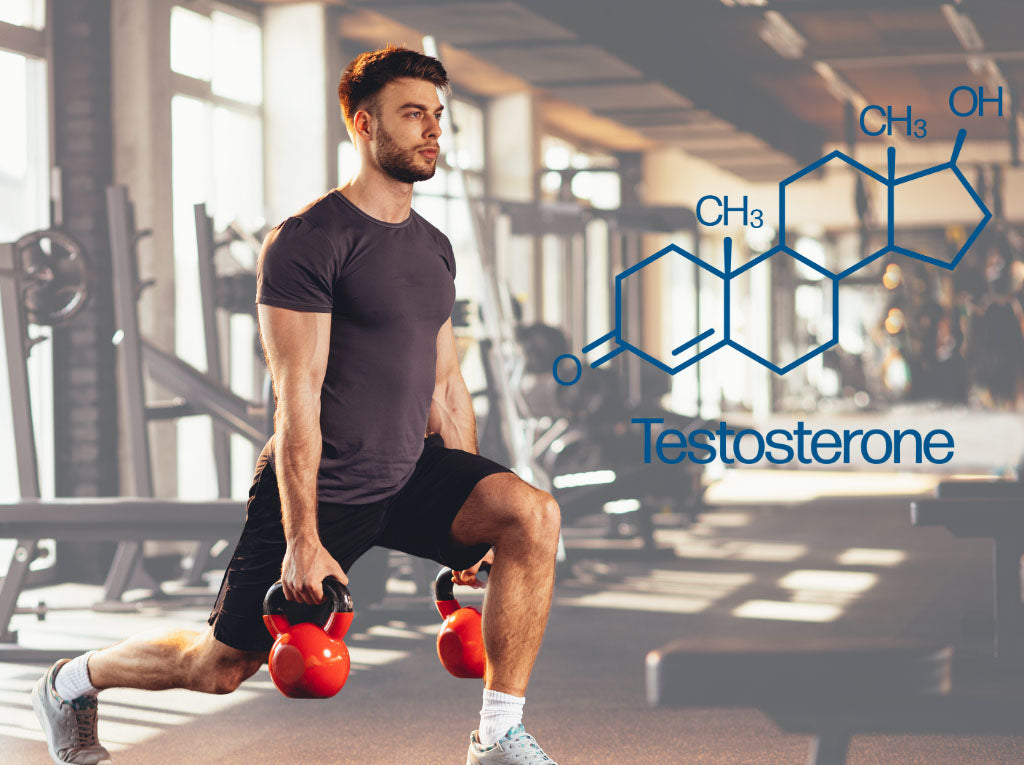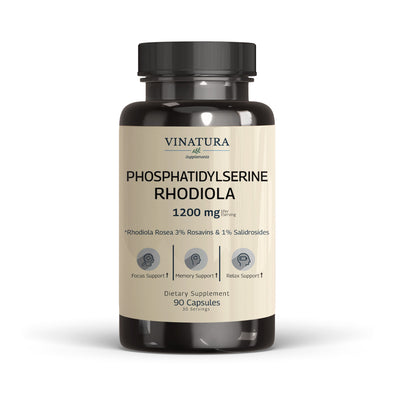
Do Leg Workouts Increase Testosterone?
You’ve probably heard the gym talk — hitting leg day can boost testosterone. But is it true? Testosterone peaks in men during puberty and early adulthood, fueling muscle growth, energy, and overall vitality.
Focusing on large muscle groups, like the legs, may trigger stronger hormonal responses than smaller muscles, making leg workouts a real game-changer for strength and fitness. Let’s see what research and real-world experience say about this.
Before exploring further, please read the disclaimer located at the end of this webpage.
Key Takeaways
- Leg workouts like squats boost testosterone temporarily, peaking for 15-30 min.
- Large muscle exercises (squats, leg press) increase testosterone more than arm workouts.
- Back/front squats build strength, core stability, and balance.
- Single-leg exercises (lunges) improve balance, reduce injury risk.
- Regular leg training supports muscle growth and athletic performance.
A Brief Understanding of Testosterone
What Is Testosterone?
Testosterone is a vital hormone that influences your hormone health, energy, and performance. It’s best known as the primary male sex hormone, though both men and women produce it.
-
In men: Most testosterone is produced in the testes by specialized Leydig cells [1].
-
In women: Smaller amounts come from the ovaries and adrenal glands [1].
As part of the anabolic and androgenic hormone group:
-
Anabolic role: Supports muscle growth, recovery, and strength training.
-
Androgenic role: Shapes traits like a deeper voice, facial hair, and male characteristics [1].
Even though men naturally have higher testosterone levels, this hormone is essential for everyone. Think of it as your body’s natural fuel that keeps you strong, energized, and balanced.
Why Does Testosterone Matter?
Testosterone is like a multitasking powerhouse in your body, supporting several key areas of health and well-being. Here’s a quick look at its major roles:
Muscle Strength and Growth: Testosterone helps your muscles grow stronger and bigger by boosting protein synthesis, which is essential for building lean muscle mass [6].
It’s especially important for anyone looking to improve strength or enhance their performance in activities like sprinting or jumping [11]. It also supports recovery after workouts, helping you bounce back faster [3].
Bone Health: Testosterone works alongside estrogen to keep your bones strong and healthy [9]. Low levels of this hormone may contribute to weaker bones over time, making it crucial for maintaining a solid skeletal structure as you age [9].
Energy and Performance: This hormone fuels your energy, supporting explosive power and speed in short bursts, like during a quick sprint or a high jump [11]. It also enhances muscle contraction, helping you perform better in physical activities [11].
Reproductive Health: Testosterone plays a key role in supporting reproductive health, keeping things running smoothly in that department [9].
Mood and Mental Focus: Testosterone can influence your mood and mental state. It may help athletes feel more prepared and focused before a big event [1].
Some studies suggest it interacts with nerve cells, potentially boosting mental clarity and drive, though much of this research has been done on animals and may not fully apply to humans [8]. Still, it shows potential for supporting mental sharpness.
As we age, testosterone levels naturally decline, especially after age 30 [8]. This gradual drop can lead to reduced muscle mass (sometimes called sarcopenia) and lower energy levels in older adults [8]. Older men tend to have significantly lower testosterone levels compared to younger men [2].
Even when exercising, older adults may not see as big a testosterone boost as younger people, though workouts can still make a meaningful difference [8]. Factors like higher body fat, which increases levels of a hormone called leptin, may also contribute to lower testosterone in some men [8].

Understanding these roles shows why testosterone is so important, not just for fitness but for overall vitality. In the next section, we’ll dive into how exercise, especially leg workouts, might influence testosterone levels to support these benefits.
Link Between Exercise and Testosterone
Testosterone is often called the body’s natural anabolic hormone because it plays a direct role in muscle growth, strength, and energy [1].
But what happens to testosterone when you exercise, especially during strength training and leg workouts?
When you train with heavy weights, your muscles experience stress such as tiny tears and a buildup of lactic acid. This signals your body to adapt and grow stronger [1]. In response, your hormone system reacts by releasing more testosterone.
Exercises that involve large muscle groups—like squats, deadlifts, and leg presses—are especially effective because they create more overall stress on the body.
Research shows that testosterone levels can rise immediately after intense resistance training and stay elevated for about 15–30 minutes during recovery [5].
This spike comes from several factors:
-
Increased activity in the testes
-
Greater blood flow and vessel dilation
-
The body’s response to lactic acid buildup [7]
Even though the boost is temporary and testosterone levels return to baseline within an hour (Jones et al., 2012), this short-term rise still supports muscle repair, growth, and recovery when training consistently.
It’s also important to understand that not all testosterone in your body works the same way.
-
Free testosterone: the active form that directly supports muscle building and tissue repair [8].
Bound testosterone: attached to SHBG (sex hormone-binding globulin), making it less active [8].
Studies confirm that strength training increases free testosterone, the form most useful for building muscle. For example, Nindl’s study (2001) found that young women experienced a 25% increase in free testosterone after intense resistance exercise [8].
In short, strength training and leg workouts increase testosterone temporarily, giving your body the hormonal push it needs to build muscle and recover faster.
While the effect doesn’t last all day, regular training helps maximize these benefits over time and keeps your hormone health in balance.
Do Working Legs Boost Testosterone?
Yes, leg workouts like squats and leg presses can temporarily boost testosterone by engaging large muscles, with effects lasting 15-30 minutes [1]. But why do leg workouts stand out compared to, say, an arm day?
Leg workouts hit harder. Targeting big muscle groups like the quads, hamstrings, and glutes seems to create a stronger hormonal response.
Studies show that heavy compound movements such as squats and leg presses can lead to a short-term increase in testosterone in the blood [1].
For example, Ahtianien et al’s study in 2003 found that doing five sets of 10 leg presses caused a noticeable spike in testosterone immediately afterward [1].
Squats usually drive an even bigger response than leg presses, likely because they recruit more muscles and require greater effort (Schwanbeck et al., 2020).
These boosts fade within 15–30 minutes [3], but with consistent training, they may still help support strength and muscle growth over time.
On Reddit, users noted that testosterone only rises slightly after leg day and the effect is temporary. Research agrees—short spikes don’t drive major muscle growth, but consistency and a solid program matter most.*
Why do legs matter? It comes down to size and effort. Bigger muscle groups require more energy and engage more fibers, creating a stronger hormonal response—including testosterone [8].
Multi-joint movements like squats, deadlifts, and Olympic lifts are especially effective since they activate multiple muscle groups at once [1].
Interestingly, research suggests that prioritizing leg exercises before smaller muscles can push both total and free testosterone higher than if you just work arms or shoulders first [6].
Benefits of Training Legs Beyond Testosterone
While leg workouts can temporarily boost testosterone, their real value goes far beyond hormones.
Leg exercises like back and front squats strengthen major muscles (glutes, quads, hamstrings, core) and create a solid foundation for the body [3,12].
Early gains come from nervous system coordination, while consistent training drives real muscle growth [7].
Single-leg moves like lunges improve balance, stability, and injury risk reduction, while front squats demand upright posture and extra core engagement [3,12].
Strong legs also power athletic performance—running, jumping, and explosive moves all start from the ground up [3]. Even everyday tasks like climbing stairs or carrying groceries feel easier with well-trained legs.
Finally, leg training builds a balanced physique, avoiding the “chicken legs” look and creating symmetry between upper and lower body [7,10].
Best Leg Workouts for Testosterone Boost
Below are key lower-body moves that not only support hormonal boosts but also build strength, balance, and overall fitness. Inspired by fitness experts like Jeff Nippard, these exercises focus on 6–12 reps with moderate to heavy weights and multi-joint movements for the strongest hormonal response [6].
Back Squats

The gold standard for leg training, squats activate glutes, quads, hamstrings, and even your lower back. The deeper you squat, the more muscle activation—and the greater the testosterone response [3].
How to do it:
-
Place the barbell across your upper back, feet shoulder-width apart.
-
Lower your body slowly, keeping your chest up and knees tracking over your toes.
-
Go as deep as you comfortably can to maximize glute and quad engagement.
-
Push through your heels to stand back up, squeezing your glutes at the top.
Front Squats

Shifting the barbell to the front increases quad and core engagement while keeping posture upright [12]. Common in Olympic lifts, they’re excellent for both strength and hormonal benefits.
How to do it:
-
Rest the barbell across the front of your shoulders, elbows high, hands securing the bar.
-
Keep your chest up and core tight as you lower into a squat.
-
Go as deep as possible while maintaining an upright posture.
-
Drive through your heels to return to standing, keeping your core engaged.
Leg Press
A machine-based alternative, leg presses target quads and glutes with controlled, heavy loading. While the testosterone response is slightly less than squats, it’s a strong option for safe overload [1].
How to do it (inspired by Jeff Nippard):*
-
Place your feet shoulder-width apart on the platform (higher for more glutes, lower for more quads).
-
Lower the weight slowly, feeling your quads stretch as you descend.
-
Go as deep as comfortable to maximize muscle engagement.
-
Grip the handles tightly and push through your heels to extend your knees fully, locking out at the top.

Lunges & Unilateral Work
Single-leg exercises improve balance, stability, and real-world athletic performance [3]. They challenge your nervous system while still hitting quads and glutes.

How to do it:
-
Step forward with one foot, keeping your torso upright.
-
Lower your back knee toward the ground, keeping your front knee over your ankle.
-
Push through your front heel to return to standing.
-
Alternate legs or complete all reps on one side before switching.
Leg Extensions

Great for isolating quads, though less effective for boosting testosterone compared to multi-joint lifts [1]. Best as an accessory to round out a workout.
How to do it:
-
Sit on the leg extension machine, adjusting the pad to rest above your ankles.
-
Extend your legs until they’re straight, squeezing your quads at the top.
-
Lower the weight slowly to avoid jerking.
-
Repeat for 6–12 controlled reps.
For maximum testosterone response: prioritize squats, front squats, and leg presses with 70–95% of your one-rep max, 6–12 reps, and 1–2 minutes rest [6].
These moves recruit the largest muscle groups, creating the strongest hormonal response [8]. Add lunges for balance and leg extensions for isolation, and you’ll have a complete lower-body routine that supports both strength and hormonal health.
Frequently Asked Questions
1. Is Training Legs Good for Men?
Yes, leg training builds strength, improves balance, and supports testosterone boosts, benefiting overall fitness. It’s essential for a balanced physique and daily function.
2. Do Squats Raise Testosterone?
Squats can temporarily increase testosterone levels, especially with heavy weights, but the effect fades within 30 minutes.
3. What Happens if I Only Train Legs?
Focusing only on legs can lead to an imbalanced physique and neglect upper body strength, limiting overall fitness gains.
4. Which Exercise Will 100% Increase Testosterone?
No single exercise guarantees a testosterone increase, but heavy, multi-joint leg exercises like squats show the most potential.
Conclusion
Leg workouts do more than give a short testosterone boost—they build strength, balance, and overall fitness. Moves like squats and leg presses activate large muscles, triggering brief hormonal responses that aid recovery and growth with consistent training.
Beyond hormones, strong legs improve performance, support daily movement, and create a balanced physique. The benefits last far longer than the spike, making leg day worth the effort.
Testimonial Disclaimer
*The testimonials presented on this website are provided by individuals based on their personal experiences with our products. These testimonials represent individual opinions and experiences, which may not be typical or applicable to all users of our products. Results may vary depending on a variety of factors, including individual health, lifestyle, and adherence to product usage instructions.References
- [1] Turgut, Abdüsselam, et al. “The Effect of Resistance Exercises on Testosterone.” The Journal of Eurasia Sport Sciences and Medicine, vol. 3, no. 1, 30 Apr. 2021, pp. 1–9, dergipark.org.tr/en/pub/jessm/issue/62089/905084.
- [2] Craig, B.W., et al. “Effects of Progressive Resistance Training on Growth Hormone and Testosterone Levels in Young and Elderly Subjects.” Mechanisms of Ageing and Development, vol. 49, no. 2, Aug. 1989, pp. 159–169, https://doi.org/10.1016/0047-6374(89)90099-7
- [3] Jones, Margaret T, et al. “Effects of Unilateral and Bilateral Lower-Body Heavy Resistance Exercise on Muscle Activity and Testosterone Responses.” Journal of Strength and Conditioning Research, vol. 26, no. 4, Apr. 2012, pp. 1094–1100, https://doi.org/10.1519/jsc.0b013e318248ab3b
- [4] Schwanbeck, Shane R., et al. “Effects of Training with Free Weights versus Machines on Muscle Mass, Strength, Free Testosterone, and Free Cortisol Levels.” Journal of Strength and Conditioning Research, vol. 34, no. 7, July 2020, pp. 1851–1859, https://doi.org/10.1519/jsc.0000000000003349
- [5] Kraemer, W., et al. “Endogenous Anabolic Hormonal and Growth Factor Responses to Heavy Resistance Exercise in Males and Females.” International Journal of Sports Medicine, vol. 12, no. 02, Apr. 1991, pp. 228–235, https://doi.org/10.1055/s-2007-1024673
- [6] Hansen, S., et al. “The Effect of Short-Term Strength Training on Human Skeletal Muscle: The Importance of Physiologically Elevated Hormone Levels.” Scandinavian Journal of Medicine & Science in Sports, vol. 11, no. 6, 1 Dec. 2001, pp. 347–354, https://doi.org/10.1034/j.1600-0838.2001.110606.x
- [7] Ahtiainen, Juha P., et al. “Muscle Hypertrophy, Hormonal Adaptations and Strength Development during Strength Training in Strength-Trained and Untrained Men.” European Journal of Applied Physiology, vol. 89, no. 6, 1 Aug. 2003, pp. 555–563, https://doi.org/10.1007/s00421-003-0833-3
- [8] Kraemer, William J, and Nicholas A Ratamess. “Hormonal Responses and Adaptations to Resistance Exercise and Training.” Sports Medicine, vol. 35, no. 4, 2005, pp. 339–361, pubmed.ncbi.nlm.nih.gov/15831061/, https://doi.org/10.2165/00007256-200535040-00004.
- [9] Wade, C. E., et al. “Intensive Exercise Training Suppresses Testosterone during Bed Rest.” Journal of Applied Physiology, vol. 99, no. 1, July 2005, pp. 59–63, https://doi.org/10.1152/japplphysiol.00332.2004. Accessed 3 Nov. 2021.
- [10] Grinspoon, Steven. “Effects of Testosterone and Progressive Resistance Training in Eugonadal Men with AIDS Wasting.” Annals of Internal Medicine, vol. 133, no. 5, 5 Sept. 2000, p. 348, https://doi.org/10.7326/0003-4819-133-5-200009050-00010. Accessed 12 July 2019.
- [11] Crewther, Blair T, et al. “Baseline Strength Can Influence the Ability of Salivary Free Testosterone to Predict Squat and Sprinting Performance.” Journal of Strength and Conditioning Research, vol. 26, no. 1, Jan. 2012, pp. 261–268, https://doi.org/10.1519/jsc.0b013e3182185158. Accessed 4 Dec. 2019.
- [12] University, Lancaster. “Exploring Differences in Electromyography and Force Production between Front and Back Squats before and after Fatigue and How This Differs between the Sexes - Research Portal | Lancaster University.” Doi.org, 24 Apr. 2012, doi.org/10.17635/lancaster/thesis/1597. Accessed 27 Aug. 2025.
Author

Product Disclaimer
Including an ingredient or study does not evaluate, endorse, or recommend any Vinatura product or any third-party product. Some ingredients discussed may not be used in any Vinatura product.
The content of the articles has not been evaluated by the Food and Drug Administration (FDA) and is not intended to promote or endorse any specific product. Any products sold on this website are not intended to diagnose, treat, cure, or prevent any disease.
Opinions and Endorsements
Any claims, statements, or opinions expressed in the articles are those of the author(s) and do not necessarily reflect the views or opinions of the manufacturers of the dietary supplement products. The products sold on this website are separate from the content of the articles and are not directly endorsed or associated with the information presented here.
Liability Disclaimer
The author(s) of the articles, website, and manufacturers of the dietary supplement products do not assume any liability for any potential consequences arising from the use of the information provided in the articles. Ingredient effects, dosages, and safety vary by individual, formulation, and context; some ingredients interact with medications or may be unsuitable during pregnancy or lactation. It is recommended that individuals consult with a qualified healthcare professional before making any dietary or lifestyle changes, including the use of dietary supplements.
Product Usage
Please refer to the product labels and packaging for specific usage instructions and guidelines for the dietary supplement products sold on this website.
Customer Support
For any concerns or questions regarding the dietary supplement products, please contact our customer support team, who will be more than happy to assist you.





Leave a Comment
Be the first to comment.
What do you think?